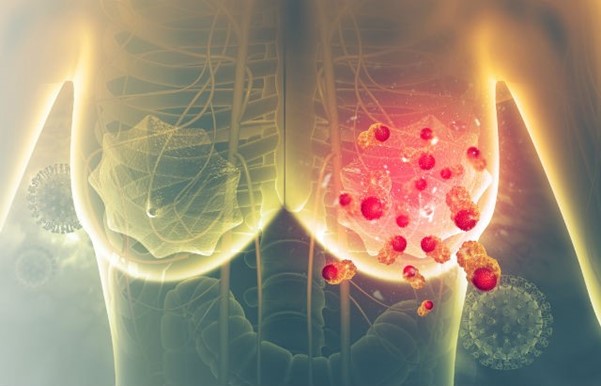When is preventive mastectomy cost-effective for women at higher risk of breast cancer?
More women who have a higher risk of breast cancer should be offered a mastectomy, according to authors of a new economic analysis. The study showed that risk-reducing mastectomy (RRM) is cost-effective for women aged 30-55 who have a lifetime breast cancer risk over 35%. Offering the surgery for these women could potentially prevent 6500 (around 11%) of the 58,500 breast cancer cases occurring annually in UK women.

Clinicians currently use personalised risk prediction models, combining genetic and other data to identify those women who are at a higher risk of developing breast cancer. Subsequent treatment options, including mammograms, MRI screening, surgery, and medication, are then offered, depending on the woman’s level of risk. RRM is recommended for women at high risk but, in practice, this surgery is only clinically offered to those carrying faults (pathogenic variants) in genes that are known to increase the likelihood that they will develop the disease (BRCA1/ BRCA2/ PALB2 PV).
WIPH Professor Ranjit Manchanda and his team, with Dr Rosa Legood (London School of Hygiene and Tropical Medicine) and colleagues from Manchester and Peking Universities, created a new economic evaluation model to predict the level of risk that would make RRM a more cost-effective treatment. Using National Institute for Health and Care Excellence guidelines to determine whether treatment was cost-effective, they compared costs of surgery with risk-stratified breast cancer screening and medical prevention in women aged 30-60 at lifetime breast cancer risks from 17-50%. Outcomes were modelled based on a UK payer-perspective, with a lifetime horizon to age 80 and a threshold of £30,000/Quality Adjusted Life Year.
Researchers say their findings support changing current practice to expand RRM access beyond BRCA1, BRCA2, and PALB2 pathogenic variant carriers, to individuals at ≥35% lifetime risk. Current guidelines on who is offered mastectomy may need to be revised to reflect these new findings.
Ranjit Manchanda, WIPH Professor of Gynaecological Oncology said:
“We, for the first time, define the risk at which we should offer RRM. Our results could have significant clinical implications to expand access to mastectomy beyond those patients with known genetic susceptibility in high penetrance genes (BRCA1/ BRCA2/ PALB2) who are traditionally offered this and could potentially prevent ~6500 breast cancer cases annually in UK women.”
Dr Vineeth Rajkumar, from the study funder Rosetrees Charity, said:
“Rosetrees is delighted to fund this truly groundbreaking research that could have a positive impact on women worldwide.”
Xia Wei, Lea Mansour, Samuel Oxley, Caitlin T Fierheller, Ashwin Kalra, Jacqueline Sia, Subhasheenee Ganesan, Michail Sideris, Li Sun, Adam Brentnall, Stephen Duffy, D Gareth Evans, Li Yang, Rosa Legood, Ranjit Manchanda. Defining lifetime risk thresholds for breast cancer surgical prevention: cost-effectiveness analysis. JAMA Oncology. 24 July 2025. https://jamanetwork.com/journals/jamaoncology/fullarticle/2836854